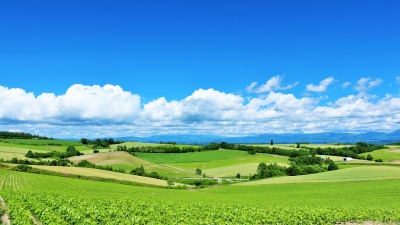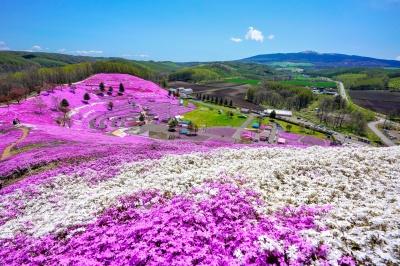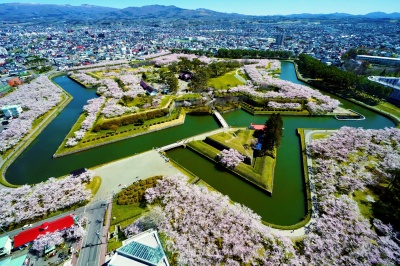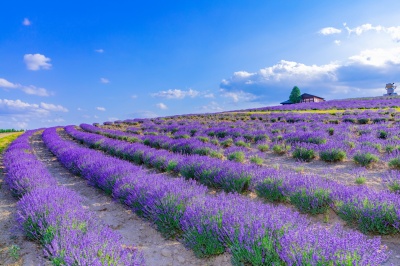A Journey for the Appreciation of Northernmost Culture and History

Northern Hokkaido, with its wide sky and expansive landscape, has long had a thriving forestry industry. In the Soya District, Kumuito Pond—meaning “The Pond of God” in the Ainu language—is surrounded by a primeval forest of alnus japonica (a type of alder) and abies sachalinensis (a type of conifer), imparting a mysterious atmosphere. Bifuka-cho, which is located halfway between Wakkanai and Asahikawa, is said to be mostly forested. The Teshio River, which undulates in the woods, is also known as the Yukon River of Japan and is extremely popular for the canoeing it offers. The beauty of North Hokkaido’s nature is not limited to its forests, however, but extends across three towns, as well as the Sarobetsu wetland, with its endless, beautiful wilderness, and Wakkanai City’s Onuma Pond, with its thousands of swans that fill the water’s entire surface in spring and autumn.
The area’s environment, surrounded by such nature, has produced many simple and heartwarming crafts using naturally derived materials such as wood, animal fur, and honey. Introduced here are experiences and facilities that enable travelers to actually try their hands at making these crafts themselves. Other features introduced include works by a sculptor with roots in Ainu culture; a memorial hall displaying Ainu culture and history; and many facilities that display valuable materials relating to Hokkaido that cannot be seen anywhere else, such as a cultural museum dedicated to Okhotsk and Karafuto. Most of these experiences are offered at a reasonable price, surely making for a memorable trip for travelers who want to experience different cultures through manufacture and crafts.
- * Please note that the text shown on this page includes machine translations.
Okhotsk Museum Esashi
Esashi-cho is located in the northeastern part of Hokkaido, facing the Sea of Okhotsk. Okhotsk culture was nurtured from the 5th to the 10th century mainly through the fishing industry. Strongly reflecting this culture, the “Okhotsk Museum Esashi” exhibits valuable materials such as a replica of the Menashidomari ruins, which depict the living style of that time, and a model of a pit house, as well as earthenware artifacts. In addition, you can also see exhibits unique to the Sea of Okhotsk, such as Japan’s largest orca skeleton, which is over seven meters long and stuffed versions of animals that live in the surrounding area. Admission is free, and tablet terminals (in English and Chinese), which can also be rented for free, offer detailed explanations of the exhibits. The museum is closed every Monday and the last Tuesday of each month.
Souya Nature School
In Nakatonbetsu-cho in the Soya Region, the Tonbetsu River runs through the center of the town, which is surrounded by limestone caves, parks, and rivers where you can pan for gold. What is more, 80% of the town is covered in forest, leading Nakatonbetsu-cho to be known as a “tree town.” Here, visitors can try experiences such as making soap and lotion by hand, using the leaves of the Todomatsu, a tree that represents Hokkaido, as well as locally produced honey. Participation costs 4000 yen per person, and you can take your completed work home with you. A souvenir of essential oil from the Todomatsu (one bottle per group) is also included, so even after returning to your home country, you can spend a relaxing time as if you were still in the forests of Northern Hokkaido. Check the website for the schedule of the hands-on classroom.
Art Village Onnenai
Bifuka Town can be reached by a two-hour drive from Wakkanai. The town’s Art Village Onneuchi was created by renovating a former elementary school building, and it is there that you can experience making by hand “Kuksa” . Kuksa is a type of wooden mug that originated in Finland, and it is said that whoever receives this mug will also receive happiness. Trees such as birch trees (Betula platyphylla), cut from the mountains of Bifuka Town, are carved into mugs and polished, the whole process being completed in about two hours. This could be the perfect souvenir to share a piece of your time away with your family and friends.
River trip CAMEL
“Yukiita craft and play” is a special plan recommended for travelers who are tired of slipping around on the slopes, and who want to experience powdered snow from a different angle. Limited to the winter season (January to early March), the plan spans two consecutive days. Slide on an original board with no bindings or edges, and experience the feeling of surfing on the snow. The first day of the plan focuses on the creation of the board, from drawing the design to cutting out the shape, and as soon as the board is completed on the second day, you can go straight out onto the field. Gliding on a completely original snowboard, both in shape and in design, will be a fresh experience for advanced snowboarders. You will be warmly welcomed by both the pick-up service and the accommodation staff. Don’t forget your snowshoes when entering the snow!
Soseisoudou Creative Studio
Unlike many farms throughout Japan, Matsuyama Farm in Bifuka Town breeds sheep. Making full use of everything a sheep has to offer, their cut wool is dyed to become wool roving (thick, untwisted, felted yarn). At Matsuyama Farm, you can make keychains using colorful felt and special needles, or bookmarks using material from the farm’s original cardboard loom. It takes about an hour to complete, so if you have some free time along your journey, you can feel free to drop by and get creative. This experience is offered at a reasonable price of 1000 yen per item. The warm and cute accessories unique to wool will remind you of your trip every time you use your souvenir.
Eco Museum Osashima Center “BIKKY Atelier 3 More”
Otoineppu-mura, the least-populated village in Hokkaido, is less than two hours’ drive south of Wakkanai. In 1978, the contemporary sculptor Sunazawa Bikky, who emigrated there, named the village’s closed school “Atelier 3 More”, and created about 1000 artworks. After his death, thanks to the efforts of the villagers, the atelier was reopened as a memorial hall, and currently exhibits about 200 works. “Bikky” is a nickname that means “frog” in the Ainu language. Bikky, who worked on small items as well as sculpture, did not like to be labeled simply as an “Ainu artist”, but his work is said to exhibit patterns that are based on his Ainu roots. The facility is closed during the winter season (November 1st to April 25th).
Wakkanai Karafuto Museum
The current Russian territory of Sakhalin (Japanese name “Karafuto”) is located in the northern part of Hokkaido and was originally inhabited by indigenous peoples such as the Ainu. Later, Japanese and Russian people began to migrate to Sakhalin, and for 40 years from the end of the Russo-Japanese War to the end of the Pacific War (WWII), the southern half of the island was Japanese territory, making the island particularly significant to the history of Russo-Japan relations. Wakkanai received about 2000 materials related to the territory’s history, and so in 2018, the memorial hall was opened. In addition to viewing a model version of the ferry that runs between Wakkanai and Sakhalin, you can learn about life on the island and the history of the island’s connection with Wakkanai and Soya. Admission is free. The memorial hall will be closed every Monday from November to March.
- Wakkanai Airport
- Okhotsk Museum Esashi
- Souya Nature School
- Art Village Onnenai
- River trip CAMEL
- Soseisoudou Creative Studio
- Eco Museum Osashima Center “BIKKY Atelier 3 More”
- Wakkanai Karafuto Museum
*Google Maps is published here using a free quota with limited display counts. Please note that there may be periods when it cannot be viewed due to the circumstances. Your kind understanding is appreciated.
Ranking of popular articles
- Hokkaido Summer Travel Guide

- https://www.visit-hokkaido.jp/en/feature/travelguide_summer
- Hokkaido Spring Travel Guide

- https://www.visit-hokkaido.jp/en/feature/travelguide_spring
- Here are the recommended cherry blossom viewing spots!

- https://www.visit-hokkaido.jp/en/feature/sakura
- Best Places to View Flowers in Hokkaido vol. 1

- https://www.visit-hokkaido.jp/en/feature/best-places-to-view-flowers-in-hokkaido-vol-1
- When is the best time to see lavender? Recommended Lavender Spots in Hokkaido

- https://www.visit-hokkaido.jp/en/feature/lavender









